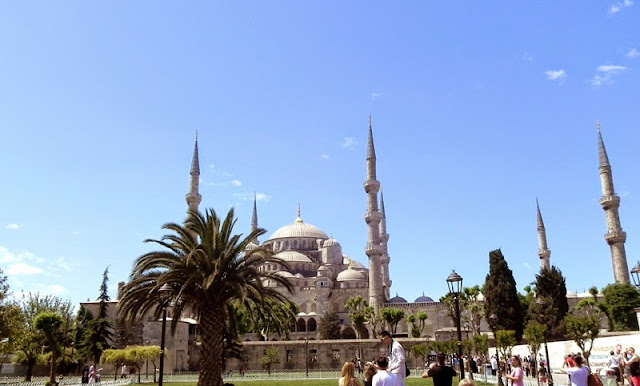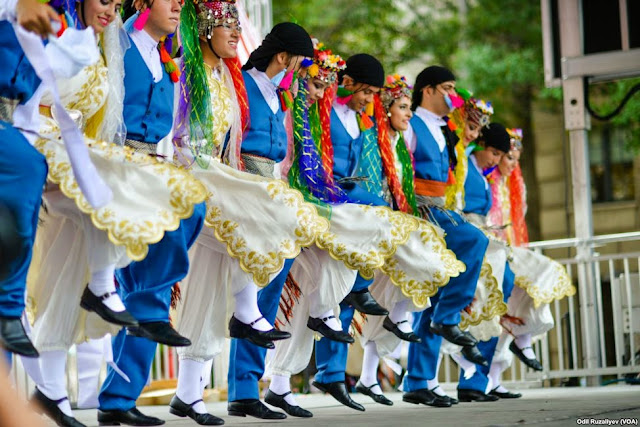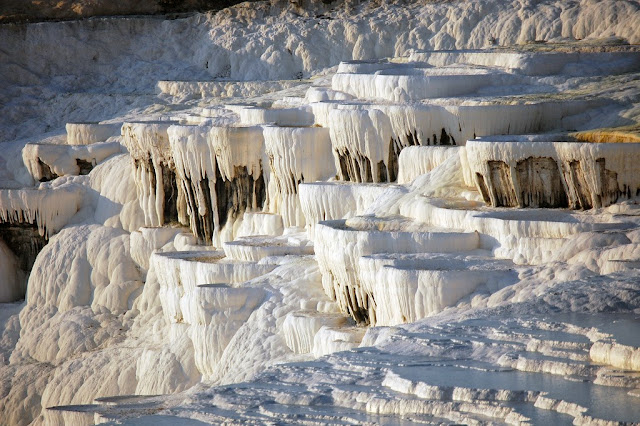Uncertainty, dilemma, bewilderment – some people hate these words. For some others, they are the part and parcel of life. In the context to travelling, these words decide which type of traveler you are. Some people prefer to plan everything in advance and even make provisions for the probable uncertainties. Some others jump at once and start enjoying whatever comes on their way, while some weird travelers like me simply let happen whatever would happen and keep exploring at the expense of all the uncertainties and yet end up with wonderful memories.
Has it ever happened to you that you travel around a place without having any idea about where you’re heading or what lies ahead? Have you ever been guided by somebody with whom you could barely interact?
Our visit to Salalah was one of such eccentric yet memorable experience where we confided with an unknown companion and explored this beautiful dreamland on the southern peninsula of the Sultanate of Oman.
First let me introduce you to the place called Salalah. Surrounded by lush green Dhofar Mountains, Salalah is located at a distance of 1100 kilometers south of the capital city of Muscat. It’s the second largest city of the sultanate and is adjacent to Oman’s border with Yemen. Salalah is traditionally known for its Frankincense trees, which is used as an ingredient in incense and perfumes and has been one of world’s top trading destinations of this commodity during the medieval times.
 |
| Salalah in Khareef - the monsoon season |
 |
| Salalah in Khareef - the monsoon season |
It was July – mid summer and while almost whole of Middle East was under severe heat under the cruelest form of the Sun, Salalah was welcoming the clouds and the fogs. The Eid holidays were just declared and it suddenly struck our minds to take this opportunity to see Salalah. We had to think twice before taking this decision. First, it was the peak tourist season and prices were sky high. Second, holy month of Ramadan was still not over. It’s worthwhile to mention that Omanis observe fasting during the month of Ramadan. Food items are not sold openly and it’s customary for everyone including the tourists not to eat or drink publicly from dawn to dusk.
However, we had one solid reason to go for the trip – to get away from the burning heat of Muscat for a few days and after a long discussion with my wife, I went on to book the tickets the same day. The hotel prices were 2 to 3 times the normal tariff but finally we could find a hotel online at 40 Rials ($105) per night. So, we two packed our bags quickly and boarded the bus to Salalah the same night.
It was a long and tiring journey. As it was a single carriageway, we could not sleep due to the lights coming out of vehicles from the opposite side. The bus halted twice on the way for the passengers to take food. Finally it was morning and we could see gentle rays of sunshine. We were moving through a barren landscape and it was endless deserts all the way as far as we could see.
Suddenly, the Sun was encircled by a thick strand of clouds and it started to become denser and darker as we moved on. Finally, when the road turned to a slope of a hill, raindrops started pouring in all over. We peeped through the foggy windows and it was green all over. Monsoon had arrived to welcome us to Salalah, to a season called Khareef.
 |
| Salalah in Khareef - the monsoon season |
Ad Dahariz beach – I asked the taxi driver. This is the place where our hotel was located.
He looked at me and raised 7 fingures and said –Rials.
7 Riyals was too much but we accepted. We were not in a mood to look out further.
During the short 7 minutes’ drive to the hotel, we wanted to strike a conversation with the driver but unfortunately he could comprehend little. He said something in Arabic, to which we simply smiled.
We reached hotel. The driver accompanied us to the reception and said something to the man. The receptionist translated it to us: Mr. Ali, the driver wants to know if you are interested in visiting the places in and around Salalah with him. He will start it at morning 9 and show you different places till 2:30 pm for 40 Riyals.
No way – I told myself, we will find somebody with whom we can communicate properly.
Please give us your contact number. I will call you if we require your help – I told Ali. The hotel receptionist, who claims to have elementary knowledge of Arabic, explained it to Ali. We were completely exhausted. So, we decided to retire to our hotel room and take rest for the rest of the day. I took this opportunity to browse internet and study about the must visit attractions of Salalah and finally ended up with an itinerary for next 2 days covering all the must visit attractions.
Everything was going fine but now we hit the dead end. For, there was no taxi to be found. The hotel receptionist told us that it would be really difficult to get a taxi due to the ongoing Ramadan. I used all my contacts and possible sources and finally found a man who was willing to take us with him for 60 Rial for a 3 hour sightseeing.
It was way too high, besides all our hard work of reaching Salalah would be useless for a meagre 3 hour sightseeing!
So, I used the last alternative. I called Ali.
Ali picked the phone. I introduced myself –you remember me? I was the one whom you dropped to hotel this morning….
Mafi Maloom – Ali replied and disconnected the phone. I knew the meaning of what he said. It meant-I don’t know. There was nobody to help us. Even the receptionist who translated Ali this morning left for the day. The new person didn’t know Arabic.
We were disappointed. We travelled such a long distance without any planning or preparation and now all our efforts were going to be wasted and we would have to confine ourselves to the hotel room and Dahariz beach for rest of the tour!
 |
| Dahariz Beach |
…
Next morning was dark and cloudy and it began to drizzle. We were taking breakfast at our hotel room when we received a call.
It was the receptionist – Good morning Sir! Your driver is waiting for you.
We were surprised. I went down and saw Ali waiting there. He smiled at me.
I greeted him and took out my itinerary from my pocket and explained him:
Look, we want to visit Wadi Darbat, Taqa, zero gravity point, Raysut falls, ............
It was of no use. Ali seemed to be completely oblivious of these places except Wadi Darbat. The receptionist also joined in to help us to communicate even though his own understanding of the language was not of very high standards.
So, thus it began. Here we were, in an unknown territory, with an unknown man, communicating with languages unknown to each other and moving ahead with an unknown itinerary.
Ali started to speak. It was difficult to understand, but we could make out some meaning from his speech. Probably he was talking about the hospitality of the Omani people, about His Majesty the Sultan and may be about the beautiful scenery of Salalah.
I tried to make best use of my body language, expressions and gestures but it all led to more confusion. Ali pointed to a large hotel on the roadside and tried to express that it was a great hotel.
Must be expensive – I told him. He looked at me seeming not to understand what I just said.
I gestured as if counting money. More money, big money- I told him by showing a high level with my hand. He turned his car and moved towards the hotel.
We were puzzled – why are we going inside? He didn’t reply. He stopped his car near the hotel entrance and pointed to an ATM.
Oh! Now I understood. My attempt to express the word ‘expensive’ by means of a gesture to count money was mistaken by him that I wanted to withdraw money from an ATM! We understood it would be for the benefit of us all not to experiment with gestures. It would only lead to more confusion.
Ali moved on, and with him we also moved on. After half an hour of drive Ali stopped his car on an isolated road and signalled us to get down from the car. It was barren land as far as we could see. We were puzzled but got out of the car. Ali pointed his fingure to something at a distance. We could see something moving towards us. Soon, it appeared bigger and bigger and finally we could recognise it. It was a hard of wild camels. There were thousands of them. It was a nice experience to see such an unbelievable number of camels crossing the road just in front of us.
 |
| Camels of Salalah |
After that he took us to the ruins of Khor Rori (also known as Sumhuram). It was an ancient fortified town and a port which dated back to 3rd century BC. During the heydays, this port was used for export of Frankincense to Europe, Mediterranean and India. It’s listed as part of “Land of Frankincense” as a world heritage site by UNESCO.
 |
| Sumhurum or Khor Rori a world heritage site |
 |
| A Frankincense tree at the ruins of Khor Rori |
Next we headed toward the Wadi Darbat – the most visited tourist attraction of Salalah. As we entered the uphill road to the Wadi, it was green all the way. Washed in rains, the green leaves were beaded with sparkling droplets of water. The cattle were grazing on the freshly grown grass and fogs were flying here and there. Nobody would believe that it’s Oman. It seemed like a dense forest of Africa!
 |
| Wadi Darbat |
 |
| Wadi Darbat |
As we were coming out of Wadi Darbat, Ali called somebody and offered the phone to me to talk. It was a voice in plain English – Hi! Eid Mubarak to you. I’m Salim – Ali’s friend. My friend can only speak Arabic. So, he wants me to ask you if you are facing any problem. Are you enjoying the trip with him?
I thanked Salim and told him that Ali’d been fantastic as a guide: “Even though, we cannot communicate in words, it’s been a fabulous trip so far. Tell him that we are thankful to him for taking us to all these good places.”
I will tell Ali. He will be pleased – Salim Said.
So, where are we heading now? – I asked Salim.
Now my friend will take you to Arjaat (Ayn Razzat). You will enjoy this place. Do not hesitate to call me if you need any help. I will be available on phone in case you need any clarification with Ali.
 |
| Ayn Razzat |
 |
| The garden at Ayn Razzat |
I understood it was Friday and it’s time for the weekly prayer in the mosque.
Ali parked his car near a mosque and went inside the mosque after showing his watch to us signalling half an hour. It was a picturesque location. So, instead of waiting in the car we explored the beautiful plains which were green with newly grown wild plants and flowers.
 |
| This is how Khareef changes the landscape of Salalah |
Next we headed towards Ayn Sahalnoot. It is a natural spring surrounded by limestone formations. Kids were playing and some adults were trying a hand on climbing the hills. Another such site we had visited during our trip was Ain Garzis. It’s also natural spring popular with tourists.
 |
| Ayn Sahalnoot |
 |
| Road towards the Green Tunnel |
 |
| Ittin |
We reached hotel at about 3 pm. I asked Ali about tomorrow’s programme. He only said: Mughsayl beach. (I will write another blogpost about our visit to Mughsayl beach as I have a lot of things to share about this natural wonder.)
We could have called Salim to get more clarification on next day’s schedule. But we didn’t. We didn’t even call Salim during our trip to Mughsayl beach the next day. We just loved the way we were exploring with Ali. We loved getting lost with Ali.
…
Ali also came to drop us at the bus stop. It was our return journey in a day bus. He parked his car in a place reserved for physically handicapped. During our tour it never got unnoticed that Ali was paralysed. He could move only one hand. But he is a master in driving, which is evident in the way he changes gears with just one hand!
 |
| With Ali |
Some journeys are made in earth! They are made to be enjoyable by proper planning, research and expert help. We make all efforts to know in advance about the dos and don’ts and every piece of information that saves us from all the hustles and bustles.
Some other journeys are made in heaven – made out of the blue but turn out to be pleasant! It may be due to the extraordinary ability of the traveler to explore the unknown, or a companion who guides you through the path or due to sheer luck. It reminds me the song – I need to know I can be lost and not afraid.
…
So get ready for a journey where the itinerary is finalized only after it is over! Take the plunge and face the challenge of uncertainty and you will be rewarded by beautiful surprise of discovering something new.



































